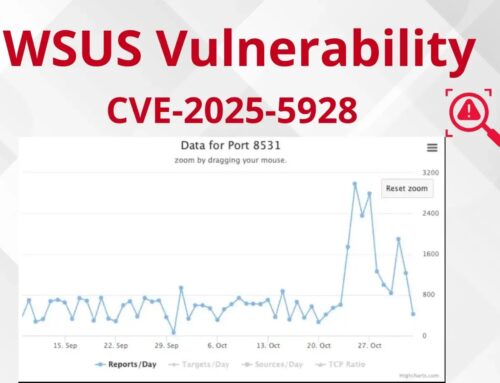
Hacker Charged in Connection with DDoS-for-Hire ‘Rapper Bot’ Scheme
The digital battlefield continues to evolve, and with it, the sophistication of cyber threats. One persistent and devastating tactic remains the Distributed Denial-of-Service (DDoS) attack, capable of crippling online services and causing significant financial and reputational damage. Recent developments highlight the ongoing fight against these malicious actors, with federal investigators successfully dismantling a major DDoS-for-hire operation and apprehending its alleged administrator.
The Takedown of “Rapper Bot”
In a significant victory for cybersecurity, federal investigators have charged Ethan Foltz, a 22-year-old from Eugene, Oregon, with allegedly operating a powerful DDoS botnet known by several names: “Rapper Bot,” “Eleven Eleven Botnet,” and “CowBot.” This botnet, one of the largest of its kind, was reportedly used to orchestrate cyberattacks targeting victims across more than 80 countries. This operation underscores the global reach and impact of such illicit services.
Understanding DDoS-for-Hire Schemes
DDoS-for-hire services, often referred to as “booter” or “stressor” services, provide individuals with the ability to launch DDoS attacks against targets for a fee. These services democratize cybercrime, allowing even those with limited technical expertise to participate in malicious activities. The “Rapper Bot” scheme exemplifies this model, offering an accessible platform for individuals to initiate crippling attacks. Such services rely on extensive botnets – networks of compromised computers – to generate the overwhelming traffic needed to incapacitate target servers.
The Anatomy of a Botnet and DDoS Attack
A botnet operates as a distributed network of infected computers, often unbeknownst to their owners. These compromised machines, or “bots,” are controlled by a central command-and-control (C2) server. In a DDoS attack, the botnet administrator directs all the bots to flood a target’s network or server with an immense volume of traffic, overwhelming its capacity and causing legitimate services to become unavailable. This can manifest in various forms, including:
- Volume-based attacks: Flooding the network layer with massive amounts of traffic (e.g., UDP floods, ICMP floods).
- Protocol attacks: Exploiting vulnerabilities in network protocols (e.g., SYN floods, Smurf attacks).
- Application-layer attacks: Targeting specific applications or services (e.g., HTTP floods, Slowloris attacks).
The efficacy of a DDoS attack is directly correlated with the size and strength of the botnet. The dismantling of “Rapper Bot” significantly cripples a major source of such attacks.
Remediation Actions and Proactive Defenses Against DDoS
While law enforcement actively pursues and dismantles botnet operations, organizations must remain vigilant and implement robust defenses against DDoS attacks. Proactive measures are critical to prevent service disruptions and protect digital assets.
- DDoS Mitigation Services: Partner with a specialized DDoS mitigation provider. These services can detect, absorb, and filter malicious traffic before it reaches your infrastructure.
- Traffic Anomaly Detection: Implement network monitoring tools that can identify unusual traffic patterns indicative of a DDoS attack. Early detection is crucial for rapid response.
- Load Balancing and Redundancy: Distribute incoming traffic across multiple servers and locations to improve resilience. Redundant systems ensure that if one component fails, others can take over.
- Rate Limiting: Configure firewalls and web application firewalls (WAFs) to limit the number of requests a single IP address can make within a specific timeframe, preventing individual attackers from overwhelming resources.
- Ingress Filtering: Implement ingress filtering at network boundaries to prevent spoofed IP addresses from entering your network. This helps to mitigate certain types of DDoS attacks.
- Bandwidth Provisioning: Ensure your internet service provider (ISP) can accommodate sufficient bandwidth to handle peak traffic and absorb potential surges during an attack.
- Incident Response Plan: Develop and regularly test a comprehensive incident response plan specifically for DDoS attacks. This plan should outline roles, responsibilities, and communication protocols during an incident.
- Regular Software Updates and Patching: Keep all software, operating systems, and network devices updated with the latest security patches to close known vulnerabilities that attackers could exploit to compromise systems and build botnets.
The Broader Implications for Cybersecurity
The arrest of Ethan Foltz serves as a stark reminder of the continuous battle against cybercrime. It highlights the dedication of law enforcement agencies to track down and prosecute individuals who facilitate and carry out these destructive actions. While specific CVEs are not directly applicable to the operation of a DDoS-for-hire service itself, the underlying methods of compromising machines to build botnets often involve exploiting known vulnerabilities. For instance, unpatched systems vulnerable to flaws like those leading to remote code execution (e.g., older vulnerabilities related to EternalBlue, CVE-2017-0144, or Heartbleed, CVE-2014-0160, if applicable to the compromised devices) could be leveraged by attackers. This case also underscores the importance of public awareness regarding compromised devices and the role individuals can play in unknowingly contributing to these botnets.
Conclusion
The dismantling of the “Rapper Bot” botnet and the arrest of its alleged operator represent a significant step in disrupting the DDoS-for-hire ecosystem. This action reinforces the message that the global cybersecurity community and law enforcement are actively working to hold cybercriminals accountable. For organizations and individuals alike, continued vigilance, robust security practices, and a proactive defense posture are essential to navigate the complex landscape of digital threats.





